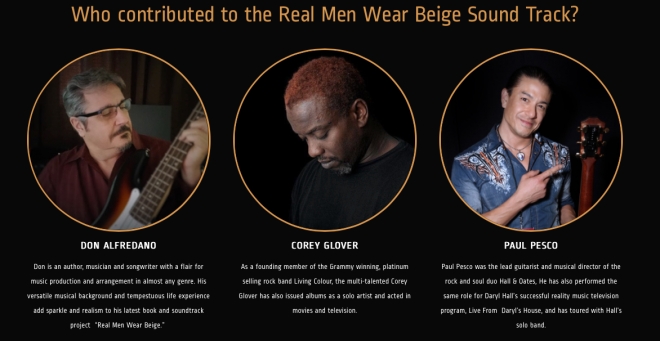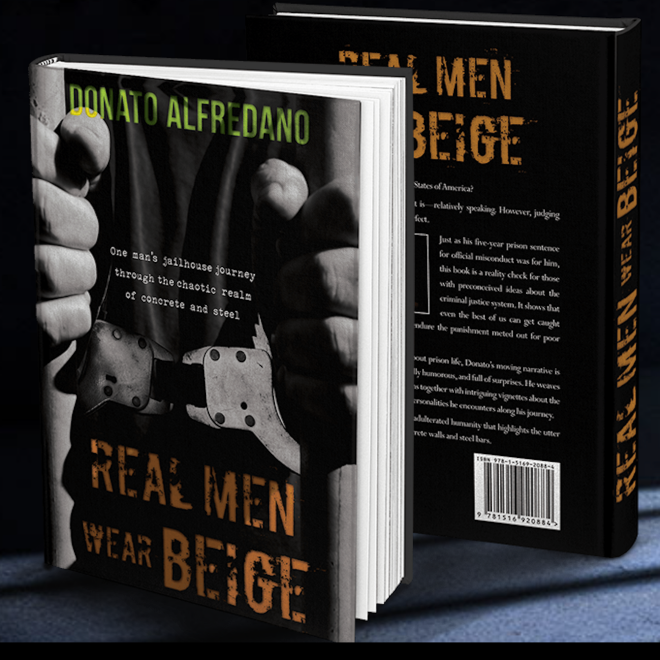I do not remember exactly how I met David Baerwald. He was one half of the duo David + David, whose sole album yielded the hit “Welcome to the Boomtown.” Even though the 1986 release went Platinum, I did not pay much attention to it at the time because my bandwidth was full with my obsession for Peter Gabriel’s So, Crowded House’s eponymous debut (featuring “Don’t Dream It’s Over“), and Nik Kershaw’s Radio Musicola. Nonetheless, seven years later, David, whose album Triage had just been released, was sitting across from me, jamming on the sofa in my living room. I was mesmerized by the gorgeous Knopfler-esque riffs he coaxed from my Taylor 812c acoustic guitar, even though his performance was punctuated by the sound of flying lawnmowers—which were in reality propeller driven small planes on approach vectors, just about to land across the street at Clover Field, aka Santa Monica Municipal Airport.
David generously offered to network with me, probably because I had recently cowritten a couple songs with John Lang, who wrote the #1 hits “Kyrie” and “Broken Wings” for his cousin’s band, Mr. Mister. Lang, a brilliant lyricist who was understandably tough to impress, admired Baerwald’s lyrics and his singing. A few sprinkles of Lang’s credibility landed on me by association—plus I had recently produced my first major label hit for Irving Azoff’s fledgling Giant (Warner) Records—so the door of opportunity to the Big Leagues was flung wide open for the first time in my young career. This was terrific…until David asked me to play guitar.
Wait, what? If I’m a pro, that’s a chance to shine, right? Yes, but it’s also a sure-fire way to blow the all-important first impression if your chops are rusty. In 1993 I was infrequently playing guitar, and when I did pick up the instrument, I played ensemble parts that worked in the the context of a recording, but made no sense without the support of a full band arrangement. As an example, try to imagine how the guitar parts from “Broken Wings” (during the third verse at 3:14) or Scritti Politti’s “Perfect Way” would sound without the bass line to define the song’s harmonic structure, or without the drums to let you know where the downbeat is. My point is that “earcandy” parts (which were pretty much all that I played at the time) were simply unable to tell the story of a song by themselves. And they certainly would not impress my guest of honor, Mr. Baerwald, without a point of reference to show him how nicely and precisely they would fit into an arrangement.
So I instead decided to show David a complex solo acoustic guitar piece that I began composing the day before. The melody was hauntingly beautiful, and the jazzy chords were of the “expensive” variety whose pedigree might be from the epic Miles Davis and Gil Evans collaboration, Porgy and Bess. The bass line was simple enough, but the sound in my head required the listener to hear all three layers of harmonic content: melody, chords and bass. Therefore, I had to play all three at the same time, on one guitar…and I couldn’t do it. To describe the attempted recital as a “train wreck” would be far too kind. David, who by contrast is a real player’s player, let me off easy, stating that he understood where I was going with the tune, and he wished me luck in developing it.
Despite the fact that I blew it, David invited me to his loft behind Hal’s Restaurant (Cafe?) on Abbot Kinney in Venice, just a short walk from the infamous Radio Tokyo Studios where I became a recording engineer back in, coincidentally, 1986. David’s loft was super cool, with a vibe that begged you to get the creative juices flowing. Downstairs was home to a fully equipped recording studio, while upstairs housed various artifacts that may or may not have been related to certain CIA exploits that may or may not have involved David’s father, a political scientist.
David played me recordings of a new, as yet unreleased, project that he was “playing around with” on Tuesday nights with his friends Bill Bottrell, David Ricketts, Dan Schwartz, Brian MacLeod and Kevin Gilbert. They were writing songs with a background vocalist who did some work with Michael Jackson. As David was humbly asking me what I thought of the songs, I was amazed by the work! The recording technique was exemplary, with sonic detail and clarity so crisply defined that I could close my eyes and see the spaces between the instrumentalists! The players were all spot-on, but the virtuosity never overshadowed the organic soul of the songs, which told stories ranging from leaving Las Vegas to having fun on Santa Monica Boulevard, three short miles away from where we sat listening. And that singer! She had a compelling delivery that brought the words to life. I was simultaneously blown away by the sound, humbled by the virtuosity and inspired to elevate my game. I already had a Top 5 MTV hit with Too Much Joy’s cover of LL Cool J’s “That’s A Lie!” and I made some seminal SubPop records for Hole, L7 and Reverend Horton Heat, plus I was having one of my flavor-of-the-month moments in the A&R community, but my records couldn’t hold a candle to David’s side project. His recordings were marvelous and impressive on so many different levels, but remarkably they remained free of pretense. They sounded timeless, they sounded easy, and they sounded live. At that moment, I became determined to become a lifelong student of the craft of making honest records that would serve the songs, not the ephemeral trends.
Sometime thereafter, I drove onto the lot at A&M Records for a meeting with A&R VP Teresa Ensenat to pitch Brian Charles’ Boston based, Beatles-inspired band, Sidewalk Gallery. I recall three things from the meeting:
1) The pitch was successful, so Brian and I would soon be recording at the historic studio where we would eventually meet Crowded House and Rusty Anderson, who would turn me on to Matchless guitar amps long before hitting the road with Paul McCartney.
2) There were several guitar cases in Teresa’s office stenciled withe the name of Steve Earle. I pointed as if to ask, “What’s the story behind them?” Teresa volunteered, “I was married to Satan.” I changed the subject to the gorgeous SoCal weather.
3) I asked Teresa about the giant painting on the side of the recording studio. The fresh faced new artist, Sheryl Crow, was a priority for the label, and I should listen and let Theresa know my thoughts. She handed me a promo copy of Tuesday Night Music Club, which I spun in the car on my way to my session. I instantly recognized the euphonic gloriousness that mesmerized me at David Baerwald’s loft. “Leaving Las Vegas”, “Run Baby Run” and “All I Wanna Do Is Have Some Fun” were so memorable that I was able to sing along with the catchy hooks weeks after initially hearing them. I was happy to know that David was likely to enjoy another well deserved hit.
Less than two years later, I was head of A&R and staff Producer at Jac Holzman’s Warner Music Discovery label, which was on the front line of the WEA distribution hierarchy. Jac, who was Time Warner’s CTO if I recall correctly, had autonomy with respect to signing and prioritizing artists. He did not have to go through layers of middlemen like subsidiary labels did. For example, Madonna’s imprint Maverick had to answer to Reprise, who in turn had to answer to Warner Bros. As one moved higher up the totem pole, each entity took a slice of revenue and creative control of its subsidiaries, who sometimes had to fight hard to sign acts they loved. Because Jac was on equal footing with WEA’s big three (effectively big four, or anecdotally WEAD, at the time) I had the freedom and support to sign quality talent in whom I believed. At SXSW (South By Southwest) festival, I walked into a nearly empty club on Austin’s Sixth Street to hang out with a couple guys I met earlier in the day, mastering engineer Dave McNair and entertainment attorney Wofford Denius.
In that empty room, over the course of 45 minutes, my mind was once again blown, I was artistically humbled, and I was creatively inspired. A tall handsome lad, clad in gas station attendant coveralls, work boots and a Fender bass, sang his ass off while fronting a crack band of pros who were equally comfortable performing tender ballads or bombastic, odd time signature, Prog Rock opuses. His gorgeous ballad “Tea For One” was a heart-wrenching story of a shy guy who finally gets the courage to ask out the object of his desire a day too late, to find her in the embrace of a new lover. Another song, “Certifiable #1 Smash”, was appropriately titled because it indeed sounded like one during that live performance. I introduced myself to the artist, Kevin Gilbert, and offered him and his manager a record deal on the spot. Kevin handed me a CD of Thud, which I promptly marked with a Sharpie to indicate the three potential hits. My wife and I cherish that CD 22 years later for its excellent artistry, as well as the fact that it is a memento given to me shortly before Kevin tragically died far too young.
It wasn’t until I returned to Los Angeles that I connected the dots and realized that Kevin was already an accomplished musical force of nature. He was the vocalist of Toy Matinee, whose two hits “Last Plane Out” and “The Ballad Of Jenny Ledge” always compelled me to crank up the volume whenever I heard them being spun (physical LPs and CDs, unlike mp3s, actually spun under a turnable stylus or CD laser back in the day) on FM radio. Further, he was also an integral part of David’s mind blowing Tuesday Night Music Club project!
By the time I met Kevin Gilbert, I had learned from my earlier experiences with David Baerwald. I learned that no matter how talented I already was, or who I was destined to become, there was always somebody more accomplished or talented. That knowledge allowed me to be realistic about how I might best serve, and integrate with, top-shelf artists and projects. The life lessons for me were to be open to awesomeness and serendipity, and to appropriately behave in environments conducive to success. In hindsight, the Gilbert working relationship got off on the right foot because I offered to serve in such a way that I could confidently deliver the goods at the highest level. By contrast, I ultimately never worked with Baerwald because I showed him my weak link instead of my true strength. It’s cool, though, because that’s how you learn—and in my case the lessons stuck.
















